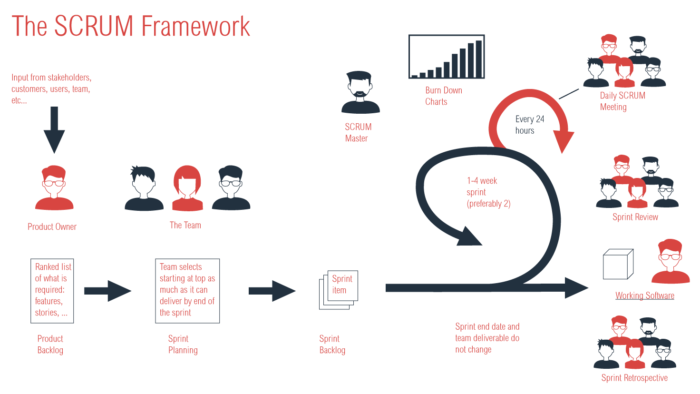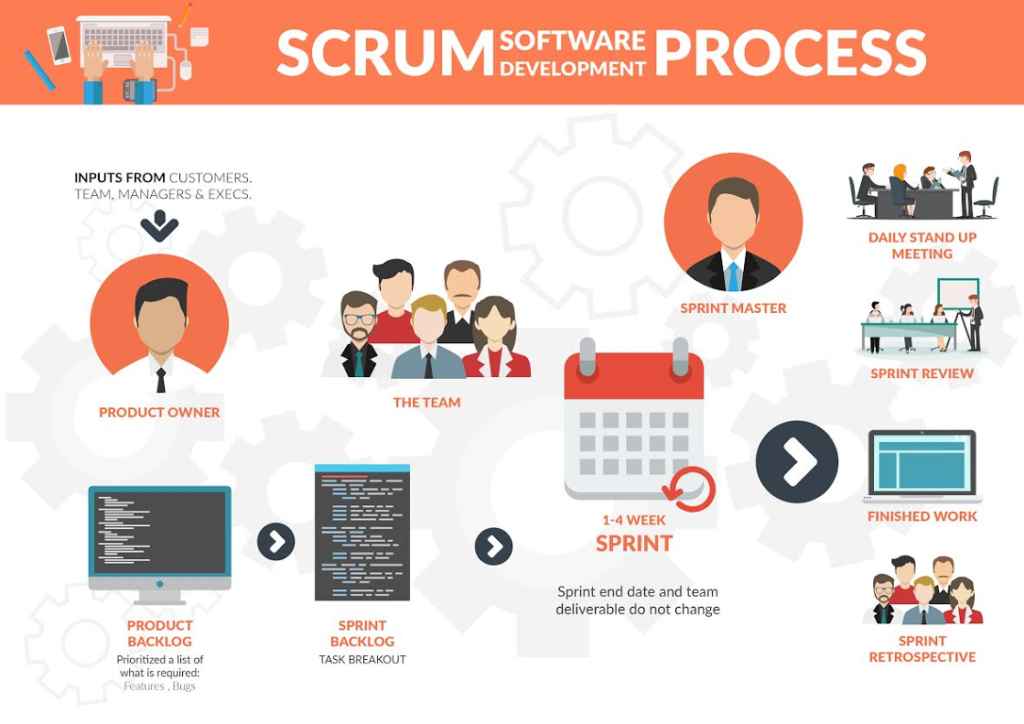
In this article, We will discuss the five phases of Scrum Project Methodology and explain the subset of each of the stages, to better elucidate how they al help in increasing effectiveness.
If you are curious about the different phases of Scrum methodology and how it all works, then this article is made for you!
Phases of Scrum Methodology? How It Increases Effectiveness
Scrum Project Methodology (definition)- is a managing software development delivery, which falls in the category of agile project management.
As mentioned, there are five phases for the Scrum Project Methodology, and there is 19 subset in total under the five phases.
Listed below are the five pages with each of the phases breaking down the different types of subsets that are carried out in the respective stages.
1 – Initiate
During this process, the overall project plans, goals, vision, development, and basically, the overall OBJECTIVE is laid out.
Stakeholders, investment, team development, and planning are the priority in this phase.
The subset actions in this phase are:
- Create a Project Vision
- Identify Scrum Master and Stakeholder(s)
- Form Scrum Team
- Develop Epic(s)
- Create Prioritized Product Backlog
- Conduct Release Planning
This phase of the overall Scrum Methodology has the most subsets. It is in this phase that the project is conceived. The importance of laying out the end goal is superlatively essential to finish a winning plan.
2 – Plan and Estimate
This phase of the project can be viewed as the estimation process. In this phase, the team wants to estimate the timeframe for the project. Setting task dates and planning what needs to be done helps to move the project along; in a reasonable timeframe.
The subset actions in this phase are:
1. Create User Stories
2. Approve, Estimate, and Commit User Stories
3. Create Tasks
4. Estimate Tasks
5. Create Sprint Backlog
Estimation. Having a Timeframe.
These are also a considerable part of the whole delivery process. Having timeframe, learning how to constrain the project to specific delivery time, is very important for not only sell purposes but also for monetary reasons.

3 – Implement
This phase, as the title suggests, is all about TAKING ACTION. The overall accomplishment of this phase is to execute, execute, and execute.
The subset actions in this phase are:
- Create Deliverables
- Conduct Daily Standup
- Groom Prioritized Product Backlog
It is so important to take action. Most ideas never come into reality because people fail to take action. As the saying goes, “JUST DO IT.”
4 – Review and Retrospect
After the project has been designed/created, the next thing that is required is to review before it’s release. It is during this phase of the project that one wants to find what to IMPROVE UPON or FIX.
Much like writing a book, this phase can be considered to be the rough draft part. It is NOT too dissimilar, as this phase is all about finding out what is wrong with the product and what needs to be fixed as a result.
Once the issues have been found, the next thing that needs to be done is improving or removing fault in the product.
The last thing any company wants to do is to release a faulty product to the masses. This part of the passing project is essential.
The subset actions in this phase are:
- Convene Scrum of Scrums
- Demonstrate and Validate Sprint
- Retrospect Sprint
These are perhaps the most critical aspect of the whole phasing process. Shipping a faulty product will cause serious financial problems for any company.
5 – Release
Lastly is the release of the product to the masses.
The subset actions in this phase are:
1. Ship Deliverables
2. Retrospect Project
Now that the product has been through the whole phasing process, it is now time to release it to the masses. That is perhaps the most exciting part of the entire process, but of course, that is subjective.
Want To Learn More About The Phases Of Scrum Methodology?
If you are curious about Scrum Methodology and would like to learn more, or maybe in need of services, feel free to reach out to Scrum Alliance.
With companies like this one, you will gain a better understanding of the Scrum process, agile mindset, Scrum roles, Scrum events, and Scrum artifacts.


















